Strength and Conditioning Specialist Reveals the Best Hip Thrust Alternatives
Few leg exercises rival the hip thrust for power, size, and strength. This staple movement reigns high among the best glute exercises and hamstring exercises due to its ability to isolate the muscle groups. However, relying on hip thrusts as the primary butt-builder may not suit everyone. Plenty of hip thrust alternatives deliver similar (and unique!) benefits if you’re dealing with equipment limitations (see bodyweight leg exercises), personal comfort, or simply want variety.
Incorporating these alternatives to hip thrusts can also help avoid overuse injuries and offer new training stimuli, which keeps your body adapting and progressing. From weighted glute bridges to kettlebell swings, you can do these exercises with varying equipment setups; they also highly adaptable to your training goals.
Whether you’re looking to build explosiveness and brute strength or simply want a change from your usual push, pull, legs routine, these hip thrust alternatives boost your workouts and keep them fresh.
What Is a Hip Thrust?
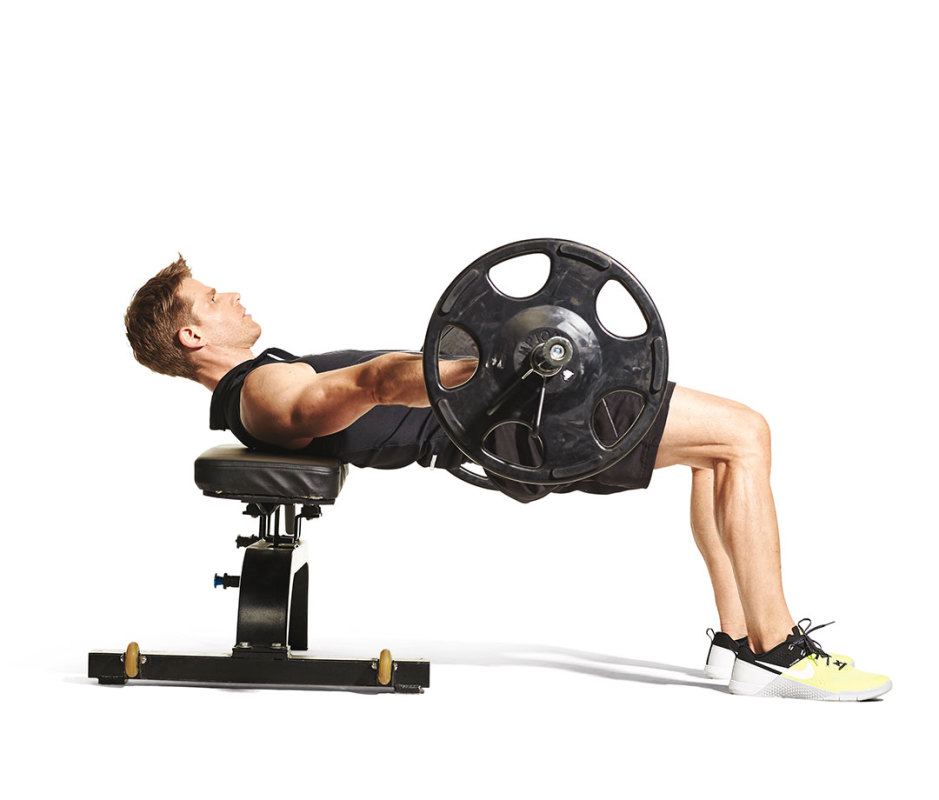
James Michelfelder
The hip thrust is a cornerstone in strength training and bodybuilding routines, primarily due to its engagement of the glutes. It’s a progressive step up from the glute bridge, with the main difference being an elevated back position that allows for a greater range of motion.
In a hip thrust, you position your upper back on a bench, place a barbell or another weight across your hips, and drive through your heels, lifting the hips and engaging the glutes to their fullest extent. This increased range of motion offers a deeper stretch of the hamstrings and glutes than a glute bridge, enhancing muscle activation and driving better adaptations.
Why is this important? When you achieve that deeper stretch and full range of motion, you maximize the load on the glutes throughout the complete hip extension. This results in a stronger contraction and stimulates muscle fibers that often don’t engage with shallower movements, ultimately supporting increased strength and muscle growth in the glutes and surrounding posterior chain.
However, despite its benefits, you may seek a barbell hip thrust alternative for variety. We’ve got plenty to work past any plateaus.
Related: Master the 5×5 Workout to Build Strength, Muscle, and Power
10 Best Hip Thrust Alternatives
These are our go-to hip thrust alternatives to build strength in your posterior chain. Each exercise targets the glutes and hamstrings while offering unique variations to introduce new challenges, keep workouts engaging, and drive consistent progress. Give them a try next time you hit the gym!
1. Weighted Glute Bridge
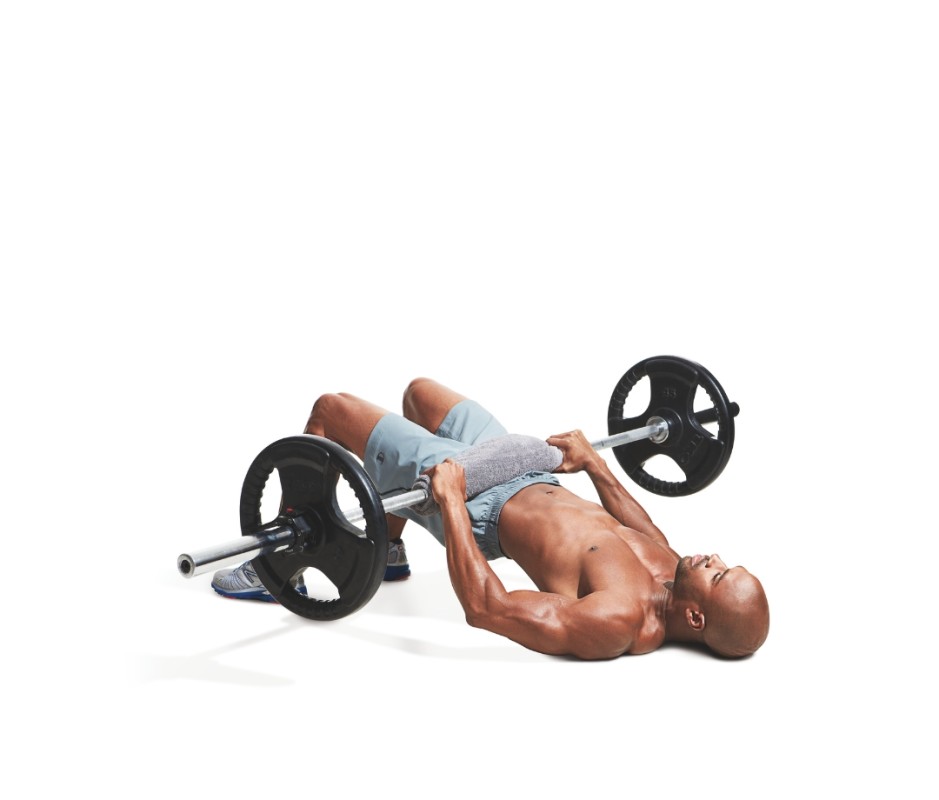
Beth Bischoff
Muscles Worked
Glutes, hamstrings, core
How to Do It
- Lie on your back with your knees bent and feet hip-width apart on the ground, to start.
- Place a barbell or dumbbell over your hips and hold it in place.
- Brace your core, press through your heels, and lift your hips toward the ceiling until your body forms a straight line from shoulders to knees.
- Squeeze your glutes at the top, hold for a beat, then lower back down slowly.
- That’s 1 rep.
Pro Tip
To increase difficulty, try placing a band around your knees or elevate your feet on a stable surface to increase the range of motion. If you’re just getting back in the gym, new to training, or looking to warm up your posterior chain, this is our favorite alternative to hip thrusts.
2. Barbell Back Squat
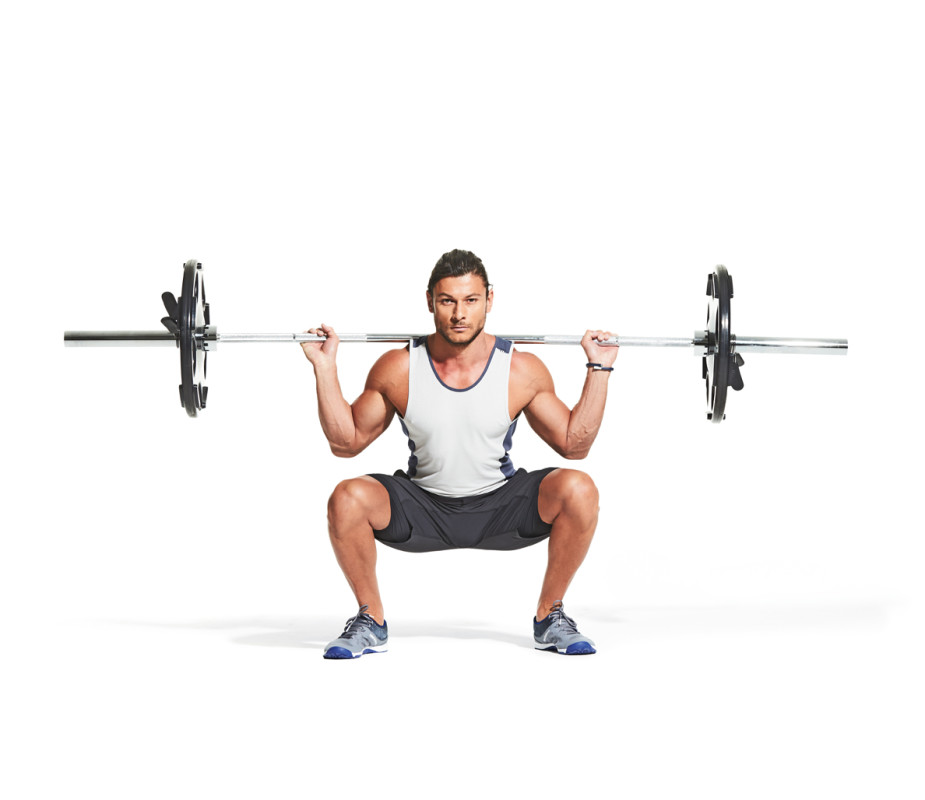
James Michelfelder
Muscles Worked
Glutes, quads, hamstrings, upper back, core
How to Do It
- Position a barbell across your upper back, gripping it firmly with your hands just outside shoulder width, to start.
- Stand with feet shoulder-width apart and brace your core.
- Initiate the movement by unlocking your hips and bending your knees simultaneously.
- Lower yourself until your thighs are parallel to the ground.
- Drive through your heels to return to the starting position, keeping your chest up.
- That’s 1 rep.
Pro Tip
Depth and tension are essential. A greater range of motion will recruit more of your glute muscles, while a controlled rep will ensure balance and quality.
3. Good Morning
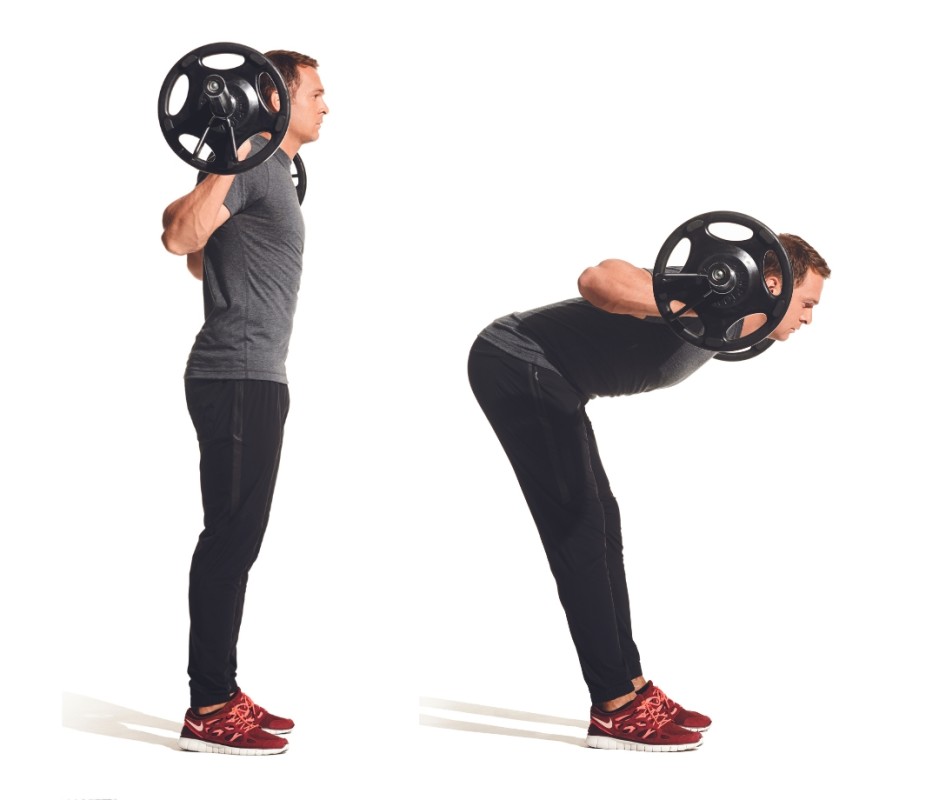
James Michelfelder
Muscles Worked
Glutes, hamstrings, lower back, core
How to Do It
- Stand with a barbell across your upper back and feet hip-width apart, to start.
- Brace your core and maintain a slight bend in your knees.
- Push your hips back while keeping your spine neutral until you feel a stretch in your hamstrings.
- Squeeze your glutes to return to the starting position.
- That’s 1 rep.
Pro Tip
Start with light weights to perfect your form and reduce stress on the lower back. Slow, controlled reps improve stability and form.
4. Reverse Hyperextension
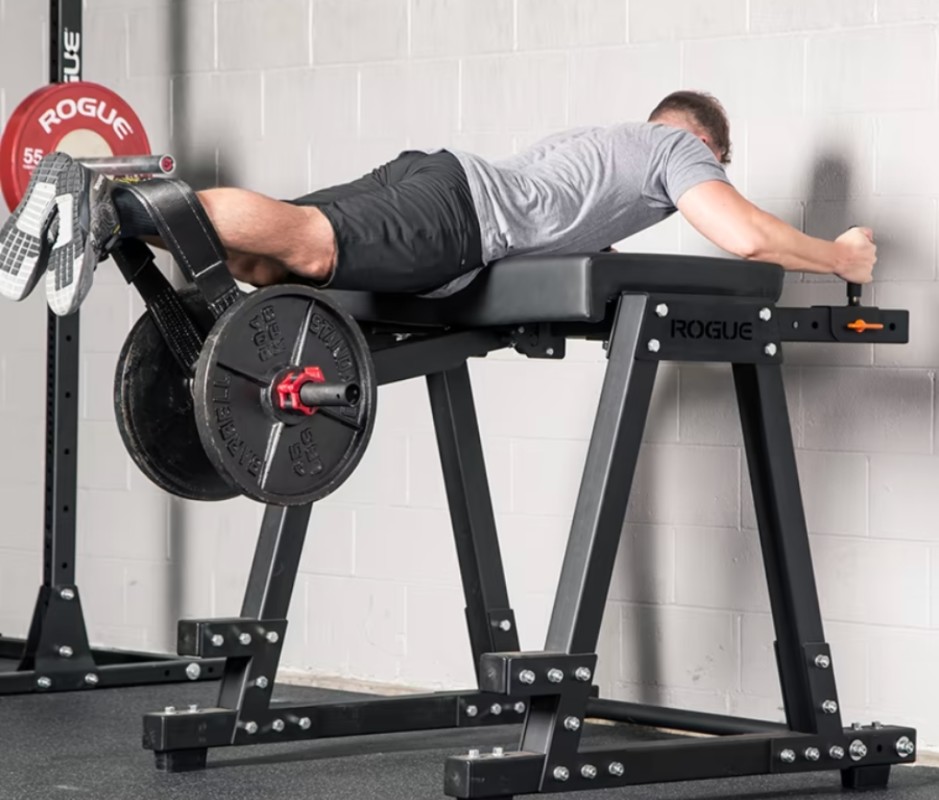
Courtesy Image
Muscles Worked
Glutes, hamstrings, lower back, core
How to Do It
- Lie face down on a hyperextension bench with your hips at the edge, holding onto the bench’s handles, to start.
- Keep your legs straight, and lift them until they’re in line with your body.
- Squeeze your glutes at the top, then lower your legs back down under control.
- That’s 1 rep.
Pro Tip
Use ankle weights or hold a light dumbbell between your feet for added resistance. Focus on feeling a solid squeeze of your glutes at the top of each rep.
5. Kettlebell Swing
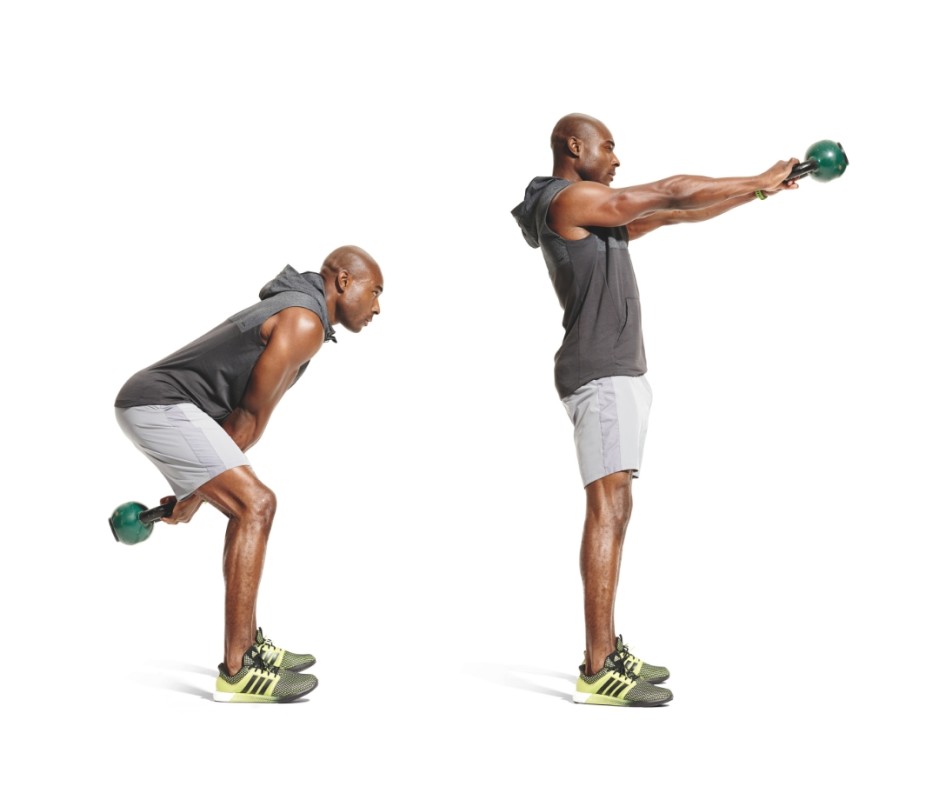
James Michelfelder
Muscles Worked
Glutes, hamstrings, lower back, shoulders, core
How to Do It
- To start, stand with feet slightly wider than shoulder-width, holding a kettlebell with both hands in front of you.
- Hinge at your hips, keeping your back flat, and let the kettlebell swing back between your legs.
- Explosively drive through your hips to propel the kettlebell forward and up to chest height.
- Let momentum bring the kettlebell back down between your legs, hinging at your hips.
- That’s 1 rep.
Pro Tip
Avoid using your arms to lift the kettlebell. Focus on driving through the hips for an efficient swing.
6. Single-Leg Hip Thrust
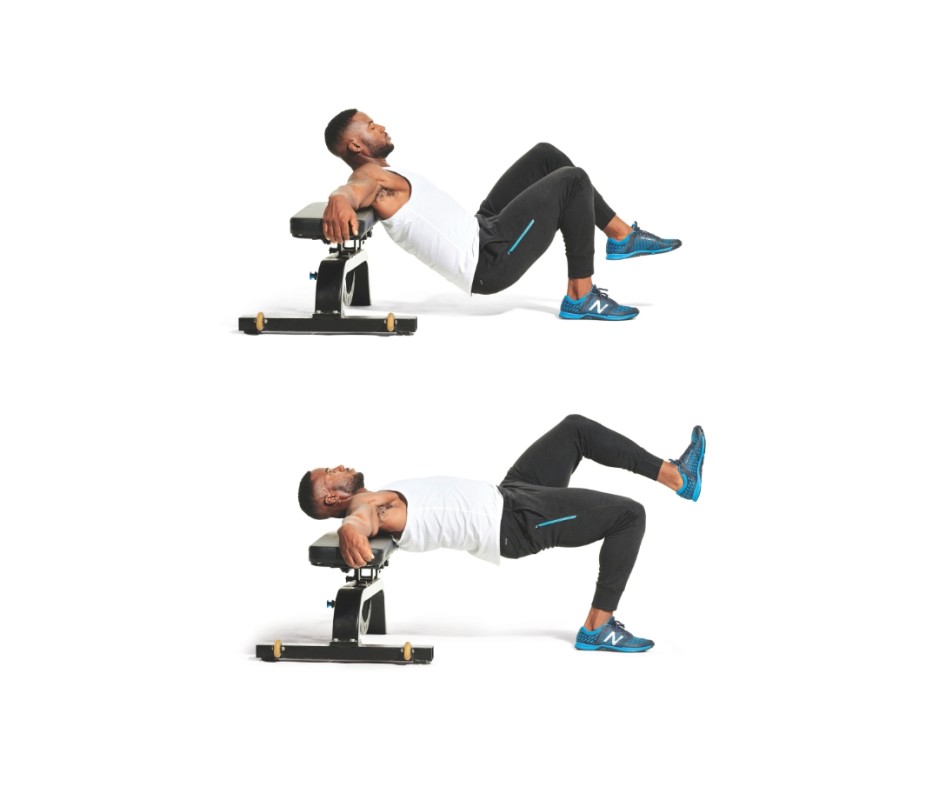
James Michelfelder
Muscles Worked
Glutes, hamstrings, core
How to Do It
- Sit on the ground with your upper back against a bench and one foot planted on the floor, to start.
- Lift your other leg off the ground, bend at the knee, and place a dumbbell across your hips (advanced).
- Drive through the heel of your grounded foot to lift your hips until your torso is in line with your thigh.
- Lower back down slowly and repeat all reps on one side before switching legs.
- That’s 1 rep.
Pro Tip
Single-leg work is challenging. To ensure proper muscle engagement, add a one- to two-second pause at the top of each rep. If you need a single-leg hip thrust alternative, try a single-leg glute bridge.
7. Cable Pull-Through
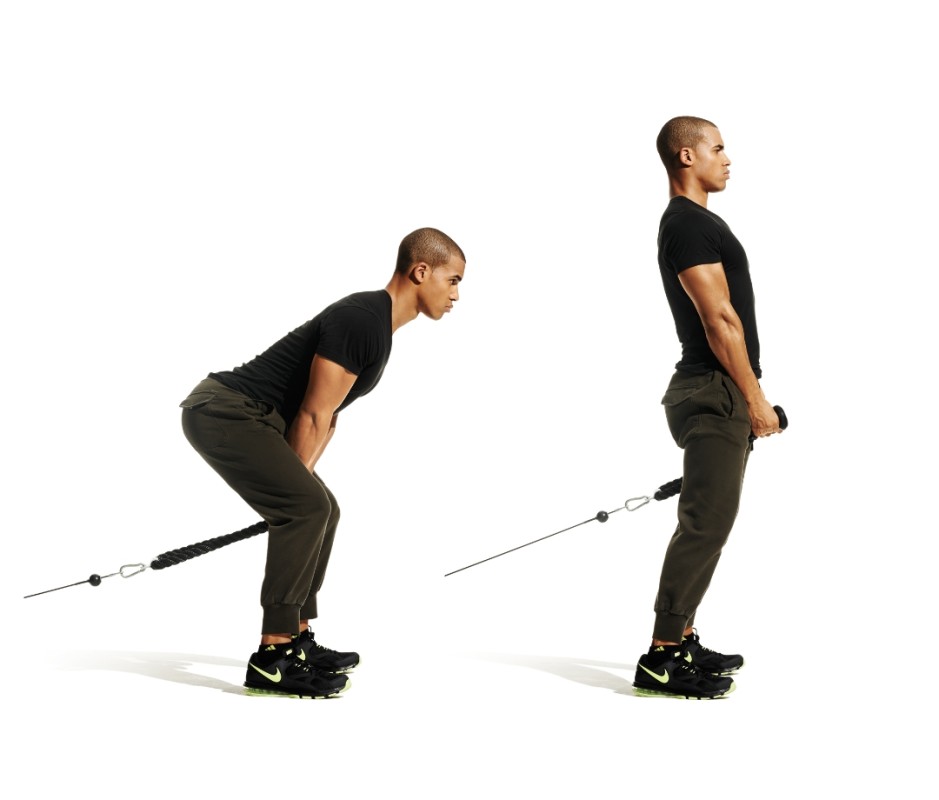
James Michelfelder
Muscles Worked
Glutes, hamstrings, core
How to Do It
- Stand facing away from a cable machine with a rope handle set at the lowest position, to start.
- Grab the rope between your legs and step forward to create tension.
- Hinge at your hips, letting the cable pull your arms through until you feel a stretch in your hamstrings.
- Drive through your heels to return to standing, squeezing your glutes at the top.
- That’s 1 rep.
Pro Tip
Hinge until you feel a solid stretch in the hamstrings. Then, drive your hips forward, squeezing your glutes at the end range. Move with intention.
8. Dumbbell Romanian Deadlift
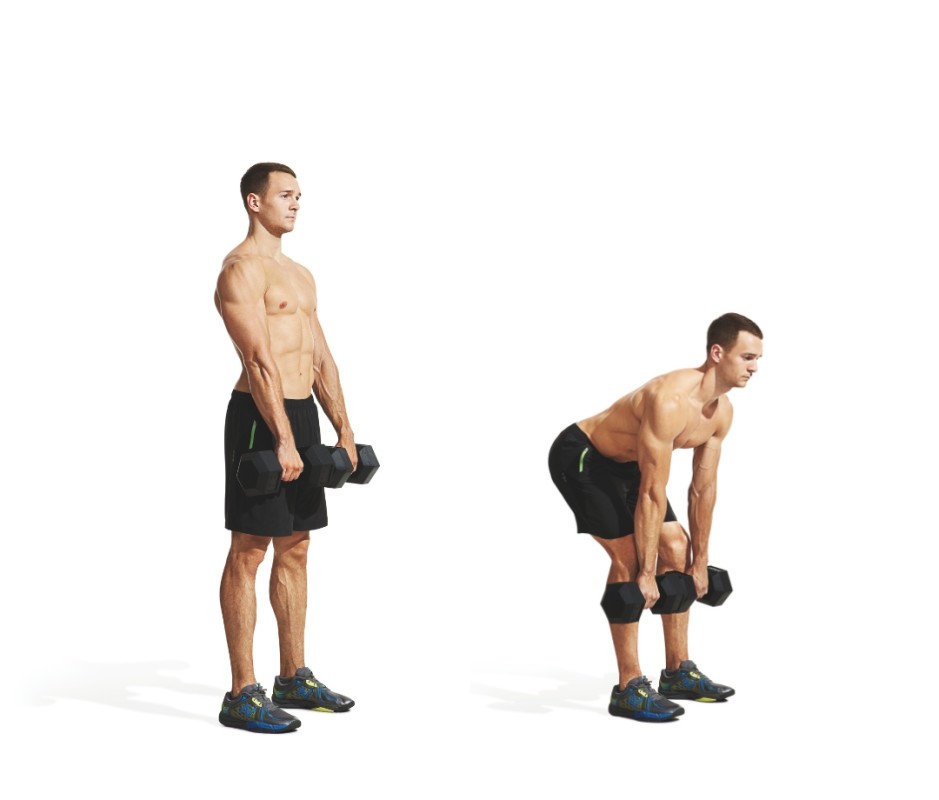
Beth Bischoff
Muscles Worked
Glutes, hamstrings, lower back, core
How to Do It
- To start, stand with feet hip-width apart, holding dumbbells in front of your thighs.
- Keeping your knees slightly bent, push your hips back to lower the weights toward your shins.
- Once you feel a stretch in your hamstrings, squeeze your glutes and return to standing.
- That’s 1 rep.
Pro Tip
Focus on the hip hinge and keep the dumbbells close to your legs throughout the movement for maximum tension in the hamstrings and glutes.
9. Sumo Deadlift
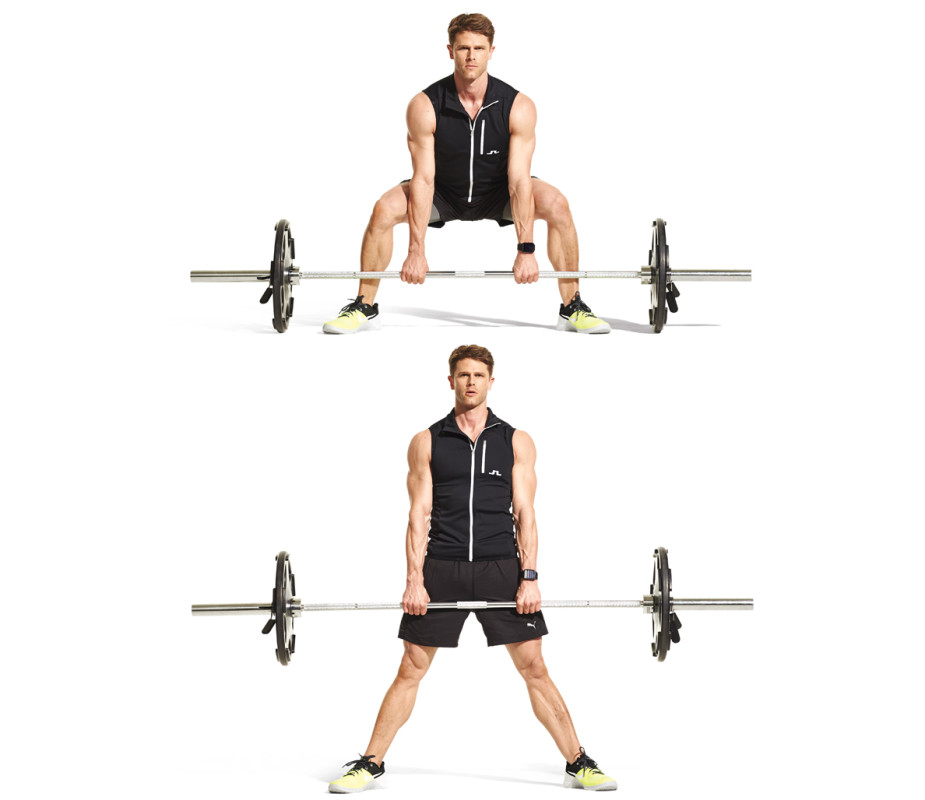
James Michelfelder
Muscles Worked
Glutes, hamstrings, quads, lower back, upper back, core
How to Do It
- Stand with feet wider than shoulder-width apart and toes slightly turned out, holding a barbell over the center of your feet, to start.
- Bend your knees, grip the barbell, and brace your core.
- Drive through your heels and extend your hips to lift the bar, keeping it close to your body.
- Lower the bar back down with control.
- That’s 1 rep.
Pro Tip
The sumo stance emphasizes the glutes and inner thighs. Perfect form is critical, so start with a lighter weight if needed.
10. Bulgarian Split Squat
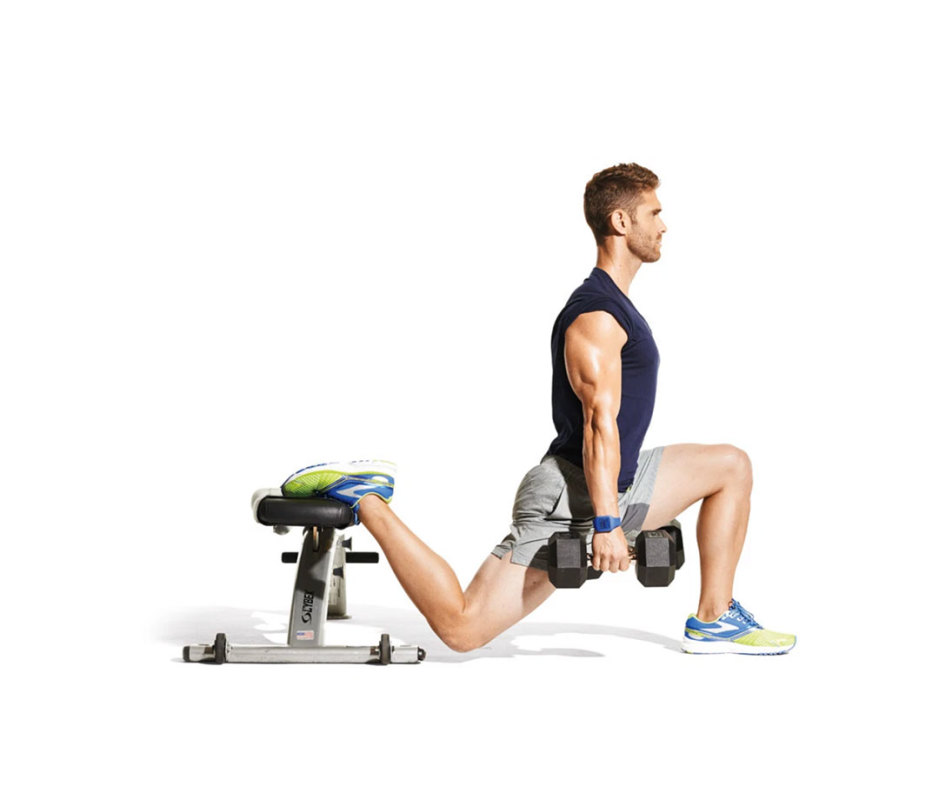
James Michelfelder
Muscles Worked
Glutes, quads, hamstrings, core
How to Do It
- Stand a few feet in front of a bench and place one foot behind you on the bench, to start.
- Hold dumbbells at your sides, keep your chest up, and brace your core.
- Bend your front knee to lower your body until your thigh is parallel to the ground.
- Drive through your front heel to return to standing, maintaining control.
- That’s 1 rep.
Pro Tip
Perform this exercise slowly to work on balance, and try elevating your front foot for an increased range of motion and enhance glute engagement.
Related: Split Squat vs Lunge: Which Is Better for Gaining Size and Strength?
Hip Thrust Alternative Workout for Building Muscle
After you’ve looked through our list of the 10 best hip thrust alternatives, it’s time to put them to the test. If your goal is to build muscle the workout below uses a mixture of compound movements and isolation exercises to help you do just that. As far as we’re concerned when it comes to lower body days, the simpler the better. Exploring different hip thrust alternatives keeps your training varied, functional, and balanced. Each alternative to the hip thrust exercise offers unique benefits that help build strength, stability, and power for a strong, resilient lower body. Below we’ve chosen a variety of movements with a mixture of reps and sets to increase muscle mass and build strength in your lower body.
- Barbell Back Squat: 4 x 6-8 reps
- Dumbbell Romanian Deadlift: 3 x 10 reps
- Bulgarian Split Squat: 3 x 12 each side
- Weighted Glute Bridge: 3 x 10 reps
- Cable Pull-Through: 3 x 10 reps
Related: Split Squat vs Lunge: Which Is Better for Gaining Size and Strength?
Benefits of Hip Thrust Alternatives
Switching up your routine with hip thrust alternatives brings impressive benefits for strength, stability, and overall performance. Whether you’re looking for an alternative to hip thrusts to reduce strain, improve your athleticism, or simply keep things fresh, these moves are game-changers. Here’s why adding a hip thrust alternative to your training can make a significant impact:
Broadened Muscle Engagement
Hip thrust alternatives hit the glutes, hamstrings, and hip muscles from different angles and positions, giving your posterior chain a more balanced development. You’ll strengthen these muscles without always relying on a barbell hip thrust alternative.
Reduced Injury Risk
Performing the same movement repeatedly—like hip thrusts—can lead to overuse injuries. Incorporating an alternative for hip thrusts in your routine helps prevent repetitive strain, as these exercises work the same muscles in varied ways that are safer for joints and ligaments.
Functional Strength Gains
Many hip thrust alternatives, like barbell back squats or sumo deadlifts, mimic movements needed in everyday life and sports. A functional workout builds functional strength that translates to life beyond the gym.
Improved Core and Hip Stability
Moves like the single-leg hip thrust alternative or Bulgarian split squat require core engagement and stability. They train your body to stay balanced under load, which is essential for building a solid foundation and protecting your lower back and hips.
Explosive Power Development
Specific alternatives to hip thrusts, such as kettlebell swings and cable pull-throughs, focus on developing hip explosiveness. Developing this quality is crucial for athletes who rely on their strength while running, jumping, and lifting.
Unilateral Training for Symmetry
Hip thrust alternatives like single-leg hip thrusts or Bulgarian split squats offer unilateral training. They work one side at a time to address any muscle imbalances. This balanced approach helps prevent injuries and builds symmetry.
Extended Range of Motion
Some hip thrust alternatives, like reverse hyperextensions or sumo deadlifts, offer a heightened range of motion. This extra stretch activates muscle fibers that may not fully engage during a standard hip thrust, promoting greater muscle activation and growth.
Simple Modifications for All Levels
Most of these alternatives for hip thrusts can be adapted with weight changes or movement adjustments, so they’re perfect for everyone—from beginners to seasoned lifters. These modifications also keep workouts interesting and challenging at any fitness level.
New Stimulus to Prevent Plateaus
Adding a hip thrust alternative introduces fresh challenges, keeping muscles stimulated and your training progression steady. Breaking through a plateau often requires a new stimulus, and these moves provide just that.
Related: How to Do Rack Pulls for a Stronger Posterior Chain

